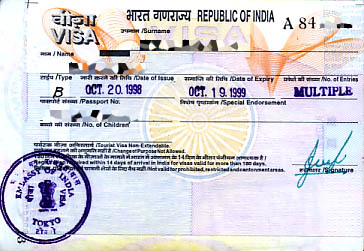The financial crisis that hit East Asia in 1997-8 put a stop to talk of miracle “tiger” economies and the Asian Century. Nine years on, however, the argument that the global economic center of gravity is inexorably shifting to Asia has never been more compelling. China is growing by more than 10%, reshaping the global markets for everything from minerals to microchips; through its success in IT services, India has deftly changed its image from poverty-stricken basket case to dynamic democracy; and Japan, the world’s second biggest economy, has stirred from a lost decade of stagnation. In the global growth stakes, Asia seems on the way to winning a sweet trifecta. Declared Jiang Jianqing, chairman of the Industrial and Commercial Bank of China (ICBC), at a World Economic Forum conference in Tokyo in June: “The new century belongs to Asia.”
Statement of the obvious – or irrational hype before another fall? Perhaps both. Asia has for years been the fastest growing region in the world, and China and India, each with a billion-plus population, are setting the pace – and boosting growth in their neighbors. In 2005, developing Asian economies grew 7.4%, the highest rise since the financial crisis. Even in the face of competition from China, the world’s biggest destination for foreign direct investment, FDI in Southeast Asia rose to US$38 billion last year, US$4 billion more than the last peak in 1997.
While the US and Europe remain key drivers of global growth, “East and Southeast Asia, including India, are bound to increase their profile and relevance to the global economy,” Manmohan Singh, India’s prime minister and architect of his country’s economic reform program, said in an address to the Asian Development Bank (ADB) in Hyderabad in May. “Asia is once again on the move. Millions of people have been liberated from poverty, ignorance and disease.”
Yet the road to that ineluctable destiny will be full of the same bumps over which the resilient region has stumbled in the past, from political tremors such as the military crackdown that shook China in June 1989 to economic earthquakes such as the 1997-8 crisis. Consider the many shocks that have rocked Asia in just the past five years – the aftermath of 9-11; terrorist bombings in Indonesia, India, and elsewhere; the wars in the Gulf and Afghanistan; tensions in the Taiwan Strait, the Korean Peninsula and Kashmir; outbreaks of the SARS virus and avian flu; the tsunami and other natural disasters; and soaring energy prices. Each episode has highlighted a threat to the proposition that the 21st Century belongs to Asia. As Mr. Jiang warned in sober qualification of his initial exuberance, “at the same time we need to seriously tackle the many challenges we face today.”
The financial crisis, for example, underscored the importance of constant restructuring and governance reform to cope with the unrelenting pressures of globalization. For Asia’s two most populous countries, this is particularly important during what is a pivotal period of transformation. China is no longer simply a manufacturer of cheap goods; India is not just a low-cost IT services processor anymore.
According to the International Monetary Fund (IMF), between 2000 and 2005, China’s share of global services exports increased by half to 3%, while India’s rose from just above 1% to more than 2.5%. Says British marketing guru Sir Martin Sorrell, group chief executive of global communications and advertising group WPP: “We tend to think of China as a low-cost manufacturing economy. But it’s quality manufacturing at the price they deliver. China is clearly becoming more important as a service economy. India provides high-quality services at the price they deliver. And more and more, India is becoming a manufacturing-based economy.”
China cannot afford to cruise complacently on the low-cost advantage. It has to bridge widening income gaps, particularly between regions, and temper a red-hot economy. It must aim for sustainable growth with environmental responsibility. It needs to stimulate domestic consumption, build world-class companies, turn state-owned firms into competitive enterprises, and promote innovation.
One key priority is to reform a banking system that promotes irresponsible lending to favored but unproductive state enterprises. While foreign banks have been snapping up stakes in Chinese financial institutions and investors have made the IPOs of Chinese state banks – Bank of China, China Construction Bank, and ICBC – highly successful, the banking system remains highly inefficient and vulnerable to crises that would require government bailouts. “China is clearly at a peak, with data showing a modest deceleration from the growth surge in the first half of 2006,” says Manu Bhaskaran, CEO of Centennial Asia Advisors, the Singapore arm of Washington-based policy and strategic advisory firm Centennial Group. “If policy is not implemented well, there is a risk that this slight slowdown turns into something worse than intended and, combined with all the structural weaknesses in China – including overcapacity and bad loans – this could precipitate a really painful correction.”
For India to avoid its own hard landing, it has to address persistent bottlenecks including a serious infrastructure deficiency and an abundance of bureaucratic red tape. Despite its success in high-tech services, it must develop a broader manufacturing base to create jobs and lift millions out of poverty. India must do much more to empower women and educate girls. Its youthful demographics – 60% of its population is below the age of 25 – could prove a huge advantage or a major headache. “There is this demographic bubble with a lot of young people,” Nandan Nilekani, chief executive officer of Indian IT services group Infosys Technologies, explains. “If you educate them well and create jobs for them, then you have a lot more people working. If India does it right, you will have a lot of economic growth. If not, then you have a lot of unemployed young people which could lead to unrest and alienation.”
For every Asian country, restructuring success could mean the difference between promise and pitfall. In Japan, the previous government of Prime Minister Junichiro Koizumi struggled over five years in office to push reform policies forward in the face of recalcitrant vested interests and conservative political opposition. There is still much to do. A pressing challenge for the new administration of Prime Minister Shinzo Abe is to reduce Japan’s ballooning fiscal deficit, now over 5% of GDP.
With the economy on the rebound, many companies have backed away from commitments to improve transparency and accountability. “People’s mentalities haven’t changed that much,” explains Masao Hirano, Tokyo-based director of management consultants McKinsey & Company. “Many Japanese managers feel reform will destroy the Japanese business regime.” According to Heizo Takenaka, Koizumi’s Minister for Internal Affairs and Communications and for the Privatization of the Postal Services, the “old economy” – traditional sectors such as manufacturing and exports – is driving Japan’s current recovery. “Japan has changed enormously in the last five years, but did we change sufficiently? No, the world is changing very fast and proactive reform is in order. We have only begun.”
There are broader regional risks that could threaten Asia’s growth. “We see within countries and within the region the widening gap between the rich and the poor,” says Hassan Marican, president and chief executive officer of Malaysia’s national oil company Petronas. “This is a risk of instability.” According to the ADB, between 1990 and 2003, the number of Asians living on less than a dollar a day dropped from about 920 million to about 620 million. But about two thirds of the poor people in the world live in Asia’s developing countries.
In some economies, development indicators reveal worsening conditions. In the Philippines, for example, the literacy rate dropped from 97% to 94% between 1990 and 2004, according to the ADB. Meanwhile, the child immunization rate decreased by five percentage points to 80%. “In many countries, inequalities are exacerbated by public spending such as on tertiary education that supports better-off segments of society but does little to help the poor,” says ADB economist Ajay Tandon. Unless government policies change, warns Ifzal Ali, the bank’s chief economist, “the part of Asia that is shining will come crashing down sooner or later.”
There are of course serious security threats to stability in the region. The recent missile test by North Korea put the spotlight once again on the nuclear ambitions of the enigmatic regime of Kim Jong Il. In August, another pilgrimage by Japan’s Koizumi to the controversial Yasukuni Shrine in Tokyo to honor his country’s war dead once again stirred protests in China and Korea. Japan’s relations with its neighbors have soured over Koizumi’s shrine visits, longstanding territorial disputes, and differing interpretations of historical events. “We should make an effort to better understand each other’s history and customs,” says Yun Jong Yong, vice-chairman and chief executive officer of Korea’s Samsung Electronics. “If we hang on to the past we are only impeding each other’s progress.”
The key to resolving – or at least mitigating – the threats to Asian progress is deeper regional integration and cooperation. From pandemics to maritime piracy, from terrorism to energy security, Asia will have to overcome diversity and division to address a host of challenges and keep to the path of growth.
The region’s resilience has been proven. “Economically, there is global dislocation, a hike in petroleum prices and the dollar has weakened,” Rafidah Aziz, Malaysia’s trade minister, said at an Association of Southeast Asian Nations (ASEAN) meeting in Kuala Lumpur in August. “We have been in the doldrums. There have been so many uncertainties and internal problems for some countries. In spite of that, we [in Southeast Asia] were able to see positive growth in our FDI. That is a good sign.” Warned ASEAN Secretary-General Ong Keng Yong in remarks to the Associated Press that could well have applied to the rest of Asia: "If we want to be in the marathon, we cannot stop for too long and say ‘time out, we need to massage our feeble legs’. We've got to keep on pushing."
 To Our Readers:
To Our Readers:




